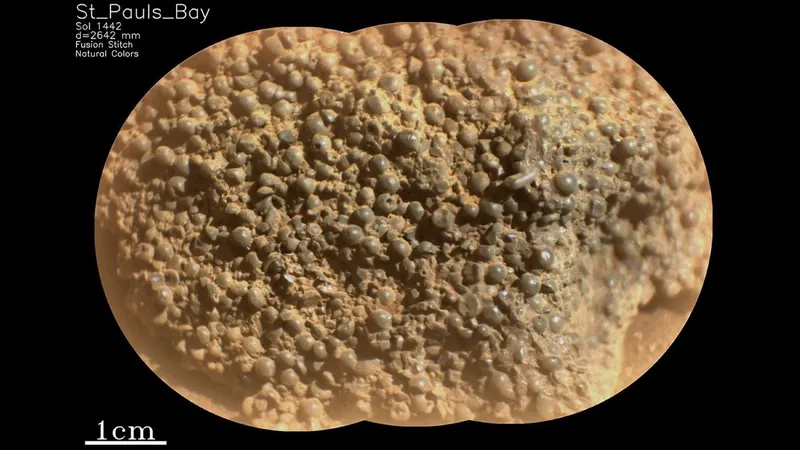
NASA's Perseverance Rover Discovers Mysterious 'Spider Egg' Rock on Mars — Could It Hold Secrets to the Planet's Past?
2025-03-29
Author: Yu
NASA's Perseverance rover has made an astonishing discovery on the rugged terrain of Mars: a peculiar rock that strikingly resembles a cluster of spider eggs. This intriguing formation, located on the slopes of Witch Hazel Hill at the edge of the Jezero Crater, boasts a fine dusting of red sand and stands out dramatically from its surroundings.
The rock, affectionately dubbed "St. Pauls Bay" by the Perseverance team, is classified as a float rock — a type of rock that has been transported from its original formation site. This movement leaves scientists in the dark about its origins and unique characteristics, as it lacks the contextual data necessary for a thorough geological analysis.
One of the most compelling theories surrounding St. Pauls Bay is that it may have been displaced by a meteorite impact. This event could have vaporized the surrounding rock, allowing it to condense into the tiny granules that now compose the strange formation. If true, this discovery could offer remarkable insights into how celestial events like meteor strikes influence the transportation of materials on the Martian surface.
Alternatively, scientists speculate the rock may have simply rolled down from higher elevations on Witch Hazel Hill, potentially originating from darker layers observed from orbit. Investigating these layers could reveal what geological processes formed the hill and whether they are linked to volcanic activity, ancient meteor impacts, or even past groundwater conditions.
Moreover, rocks such as St. Pauls Bay are critical for understanding the evolution of Mars itself. They provide valuable evidence of the complex interactions among water, rock, and geological forces on the planet. This knowledge could play a pivotal role in answering the age-old question: did Mars ever harbor life?
With the ongoing research into Martian geology, the insights gleaned from such discoveries may not only enhance our understanding of Mars but could also inform future missions and the ongoing quest to determine whether life ever existed elsewhere in our solar system. Stay tuned as scientists continue to unravel the mysteries of our cosmic neighbor!
 Brasil (PT)
Brasil (PT)
 Canada (EN)
Canada (EN)
 Chile (ES)
Chile (ES)
 Česko (CS)
Česko (CS)
 대한민국 (KO)
대한민국 (KO)
 España (ES)
España (ES)
 France (FR)
France (FR)
 Hong Kong (EN)
Hong Kong (EN)
 Italia (IT)
Italia (IT)
 日本 (JA)
日本 (JA)
 Magyarország (HU)
Magyarország (HU)
 Norge (NO)
Norge (NO)
 Polska (PL)
Polska (PL)
 Schweiz (DE)
Schweiz (DE)
 Singapore (EN)
Singapore (EN)
 Sverige (SV)
Sverige (SV)
 Suomi (FI)
Suomi (FI)
 Türkiye (TR)
Türkiye (TR)
 الإمارات العربية المتحدة (AR)
الإمارات العربية المتحدة (AR)